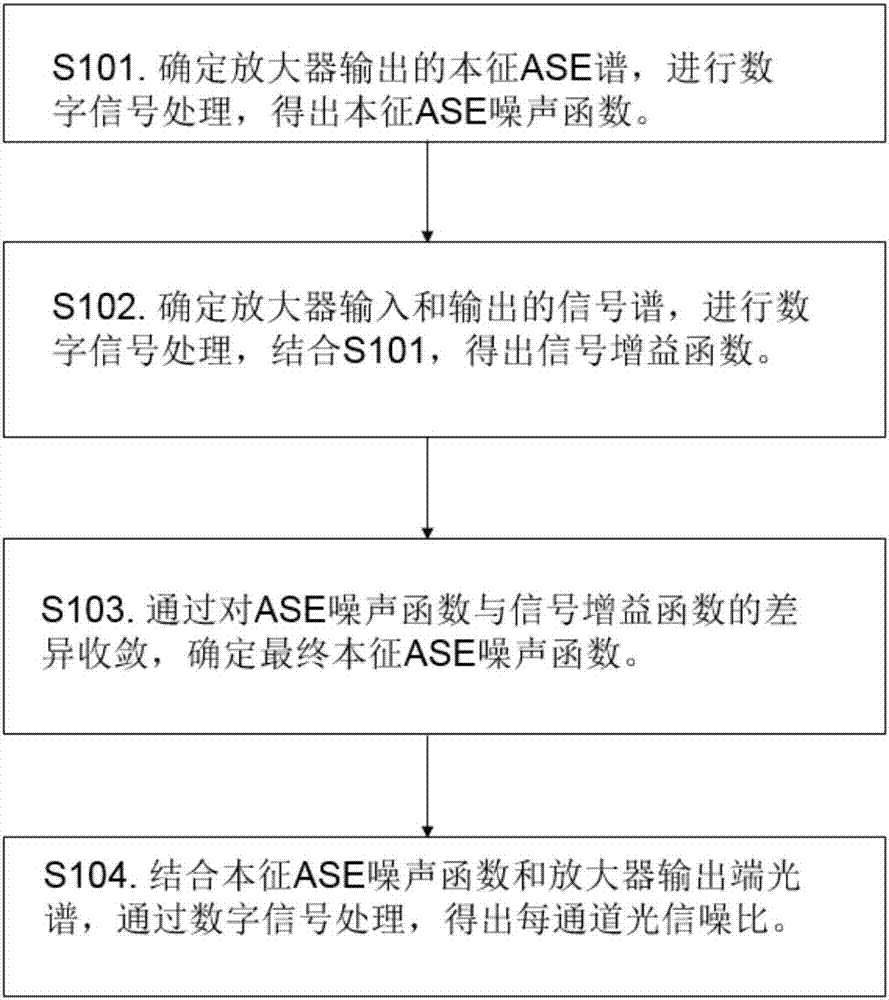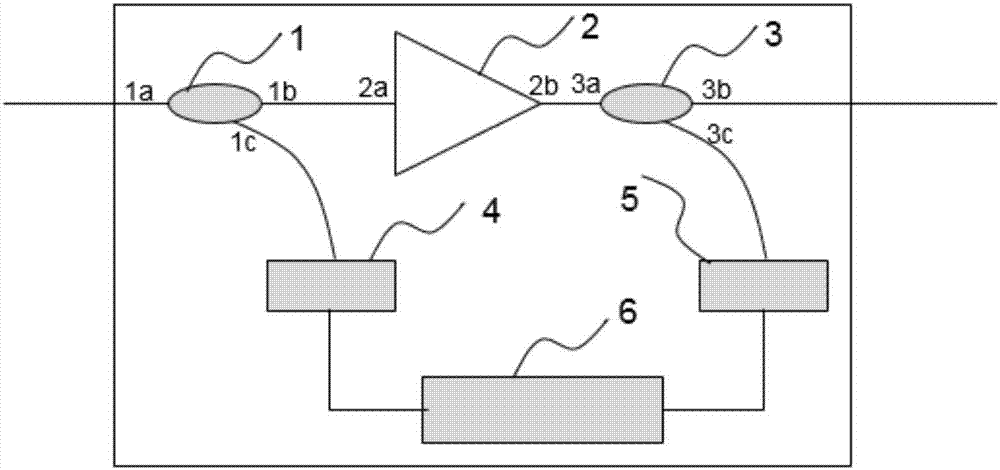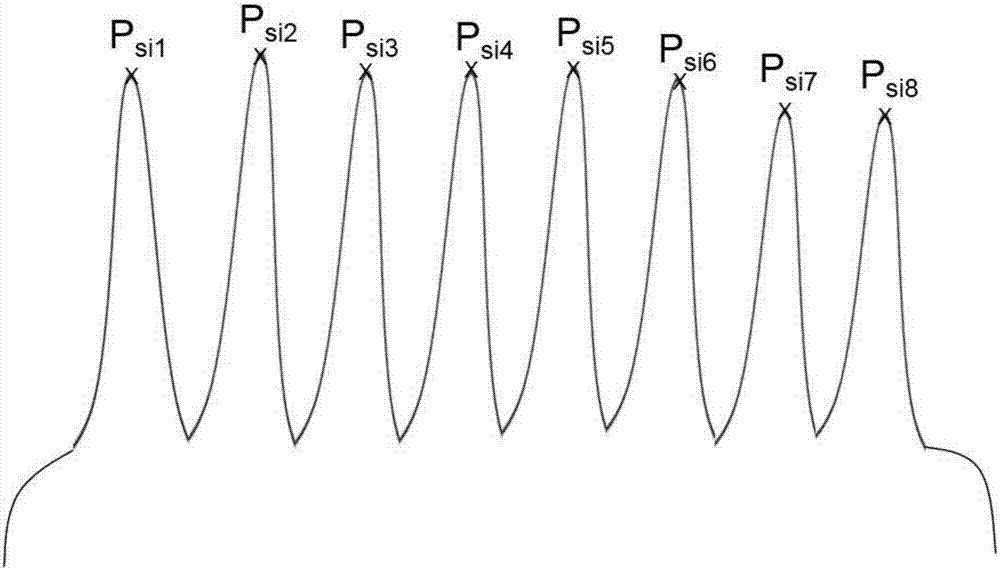Ultra-high rate ultra-dense wave-division multiplexing optical signal-to-noise ratio monitoring method and system
An ultra-dense, wavelength-division multiplexing technology, applied in electromagnetic wave transmission systems, transmission systems, electrical components, etc., can solve problems such as inapplicability and errors, and achieve the effect of reducing errors and realizing accurate testing
- Summary
- Abstract
- Description
- Claims
- Application Information
AI Technical Summary
Problems solved by technology
Method used
Image
Examples
Embodiment
[0046] In order to make the object, technical solution and advantages of the present invention clearer, the present invention will be further described in detail below in conjunction with the accompanying drawings and embodiments. It should be understood that the specific embodiments described here are only used to explain the present invention, not to limit the present invention.
[0047] In order to illustrate the technical solutions of the present invention, specific examples are used below to illustrate.
[0048] figure 1 It shows the test flow of the accurate monitoring of optical signal to noise ratio proposed by the present invention.
[0049] In the first step, when the optical amplifier has no input light, turn on the pump laser to make the amplifier work, and test the optical power Pase3b of the straight-through port 3b of the output end and the optical power Pase3c of the monitoring port 3c respectively. And get the ASE intrinsic spectral function F(λ) of the monito...
PUM
 Login to View More
Login to View More Abstract
Description
Claims
Application Information
 Login to View More
Login to View More - R&D
- Intellectual Property
- Life Sciences
- Materials
- Tech Scout
- Unparalleled Data Quality
- Higher Quality Content
- 60% Fewer Hallucinations
Browse by: Latest US Patents, China's latest patents, Technical Efficacy Thesaurus, Application Domain, Technology Topic, Popular Technical Reports.
© 2025 PatSnap. All rights reserved.Legal|Privacy policy|Modern Slavery Act Transparency Statement|Sitemap|About US| Contact US: help@patsnap.com



